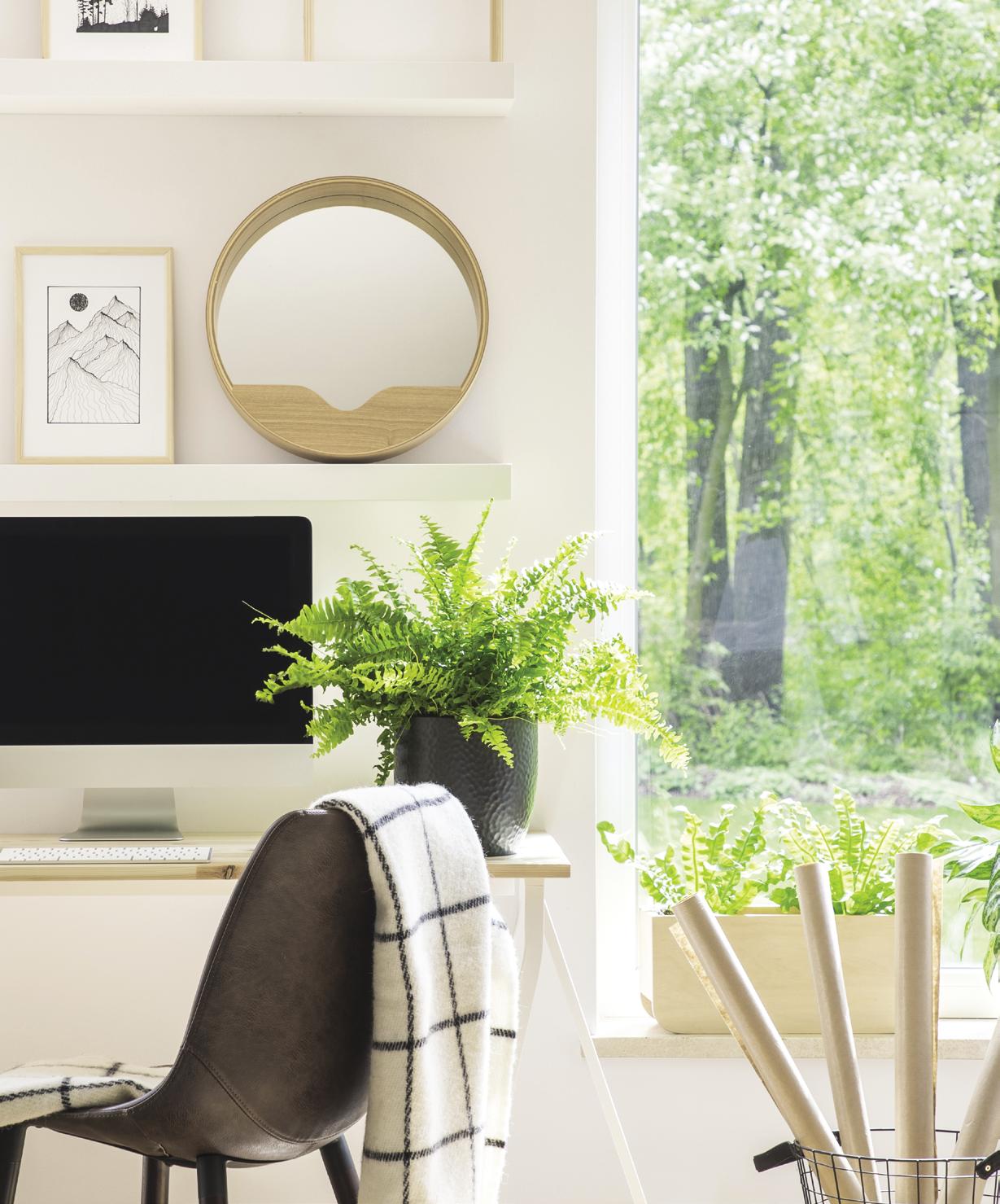
18 minute read
Fashion - What on earth are you wearing?
BY NIKKI HIND
Hands up if you have items in your wardrobe that have never been worn ? According to recent research, the average person only wears around half of the clothes in their wardrobe, and most of us own clothing that we have never worn.
Advertisement
I am definitely guilty of both crimes.
Excess and consumerism; the world is choking on the consequences of this double-sided coin, in general. Global warming is the issue of our era. The best scientific minds in the world are heroically working overtime to save our planet and rescue the human race from itself.
Meanwhile, the fashion industry has been quietly getting away with environmental-murder, due to its expediential growth and deceptively complex environmental impacts.
The UN recently declared that the fashion industry is the second largest polluter in the world (hot on the heels of the oil industry), fashion industry emissions are forecast to grow by 63% by 2030, and the fashion industry consumes more energy than both the aviation and shipping industries combined.
It is, of course, the Fast Fashion movement that is responsible for these devastating environmental impacts. We tend to think of fast fashion as the ‘$5 t-shirt’, but it’s far more pervasive, spanning the entire spectrum of price-points.
According to a 2020 report by the World Economic Forum, since 2000 clothing production has roughly doubled. In the decade from 2000 to 2010 the average number of collections released by European fashion labels more than doubled – from 2 per year to 5 per year. H&M currently release between 12 and 16 collections per year; whilst Zara blitzes the competition by releasing a ridiculous 24 collections per year. And 85% of all textiles go to landfill each year.
Consumers obediently kept pace with the increasing speed of the industry, purchasing 60% more garments in 2014 than in 2000, whilst keeping the garments for half as long, and wearing them an average of 36% less.
So, is it just a matter of slowing the fashion industry down ? And if so, who should be held accountable: government, retailers, manufacturers, brands, industry bodies, industry shows, consumers, media … ?
To shed some solution-seeking-light on the situation, I asked four fabulously passionate women, who are actively pursuing innovative sustainable fashion solutions, for their reflections on slow fashion.
Lauren Neilson
Sustainability Strategy, UK
laurenneilson.com | +61 455 215 375
1. What’s the key ? Where should we be focusing in order to successfully balance the health of the Earth, with the needs of the fashion industry?
The classic line in the sustainable fashion sector comes from the original punk Vivienne Westwood – Buy less, Choose Well, Make it Last. The volume of clothes produced is the key problem facing the fashion industry and buying less as a consumer is a great place to start. Volume is often discussed in relation to the environmental impacts of production and the waste produced, but it would not be possible to produce the volume of clothing without the widespread exploitation of workers making the garments.
2. Can Renting Fashion be a viable business model for the renting outlets, the retail industry, & designers?
Renting is a relatively new business model for womenswear, but it a starting to become a more prominent feature of the fashion ecosystem. Glam Corner in Australia, Rent the Runway in the US and On Loan in the UK have shown that rental is very much on the agenda. Rental is a different way of experiencing clothing, and takes a shift in perspective for the consumer – away from the feeling of ‘ownership; to one of ‘experience’. Brands themselves are beginning to experiment with the model, such as Ganni and Mud Jeans in Europe and more recently, Ralph Lauren in the US offering rental direct to customers. As brands explore this new offering there will certainly be interesting to see how this model develops as brands look to capture the value of the rental market directly away from the multiband offerings.
3. Can an innovative, engaging Fashion-Renting industry be like rehab for a society addicted to Fast
Fashion?
Rental is not a ‘silver bullet’, the clothing must still be disposed of at the end of its life. There is still the question of whether rental replaces fast fashion purchases or it becomes simply an additional form of consumption. Sizing and inclusivity in the rental market is also still an issue as many designs are limited in their range, particularly luxury labels that rental companies prominently feature. Time will tell how rental fits into our wardrobes and just what impact this has on our fast fashion purchases.
I would absolutely encourage consumers to try renting. If combined into a thoughtful wardrobe, renting is an exciting way to experience fashion without purchasing cheap fast fashion which is so often thrown away or sits at the back of our wardrobes never to be worn.
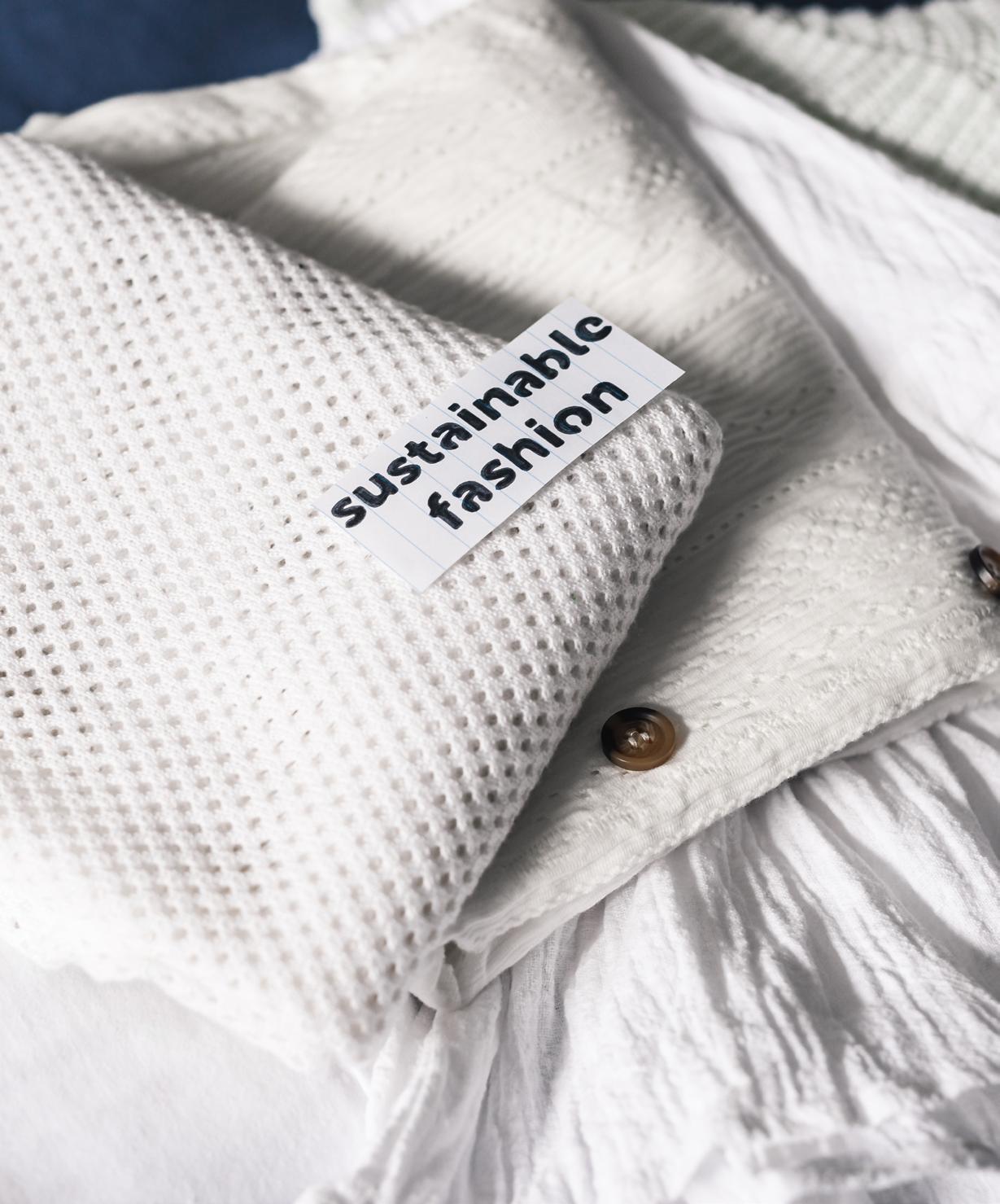
Personal Style Specialists: Donna Cameron and Briar Jasper-Batson Fashionbyfoot.com

It’s time to confront our addiction to excessive fashion consumption and restore some love.
Style specialist, Donna Cameron, both loves fashion and hates that Australians discard 6000 kg of clothing every TEN MINUTES, so she’s written a book outlining a better way to consume fashion while not forgoing the fun. The book launches as part of NGV Melbourne Design Week (26 Mar - 5 Apr) and encapsulates this year’s theme: Design the World that You Want. From the NGV team; “Normal is over. The tumult of 2020 continues to demonstrate how the issues of ourtime – climate, public health and social justice – are intertwined. Let’s look towardsthe world we might make together.”
Many think if you can’t afford to dress head to toe in sustainable fashion then you may as well give up; but not Donna. She outlines a creative and colourful process anyone can use to create a loved AND sustainable wardrobe. No stranger to sustainability (she won a UN Award in 2000 for co-producing the best environmental TV program and has hosted ethical fashion tours since 2017), Donna says, “the most sustainable garment is the one you love and wear a LOT”. The book is as stylish as it is valuable with the addition of beautiful illustrations by Alfia Galimova and photography by William Chute.
https://www.donna-cameron.com.au/order-my-book hello@donna-cameron.com.au | +61 418 101 235
C O L O U R
t h e
secret
t o c r e a t i n g a
sustainable wardrobe
Donna Cameron
Personal Style Specialist
donna-cameron.com.au | +61 418 101 235 | hello@donna-cameron.com.a
1. Are stylists currently overlooked in their potential to curb the fashion industry’s increasingly devastating environmental damage?
Well, here’s the catch; a ‘stylist’ traditionally works for a brand and dresses people to look good in the brand’s clothing to bring about sales, or they work with celebrities. My work is diferent to that: my clients can be anyone and they are the focus, and take priority over the clothes. I find clothes to suit them, not the other way around. My training was as an ‘image consultant’ but I coined the term ‘personal style specialist’ as people seem to understand that better. Because I guide people to identify their sartorial goals and to buy more strategically based on their goals, waste is minimised. Their goal might be work related, or nailing a post-work style, or it could be exploring what styles they like the look of themselves wearing. Knowing what shapes, textures, colours, proportions etc work for a person is not only empowering; it substantially reduces poorly considered fashion choices becoming landfill (and of course saves lots of money). This is essentially what my book, COLOUR: the secret to creating a Sustainable Wardrobe, is about. People are beginning to realise how our work helps reduce environmental damage, and this is crucial because fashion is one of the most polluting industries globally.
2. Can an innovative, engaging stylist industry be like rehab for a society addicted to fast fashion?
I believe so! The anticipation of owning new clothes activates a few brain systems, including the release of dopamine. As people continue to seek ‘reward’, buying new things can become as addictive as any other addictive behaviour. If they buy without knowing if the clothes will serve a purpose / look good / fill a gap simply because they are cheap, they can quickly accumulate excessive quantities. Interestingly, dopamine is associated with wanting more rather than feeling good so the satisfaction gained from new purchases doesn’t last long. People can be weaned ofF this addictive behaviour through learning to appreciate new aspects of fashion; perhaps its production story or how it helps them look a certain way or how they feel wearing the piece. It’s all about education and learning to see fashion through a new lens. I love opening people’s eyes to viewing fashion diferently, whether it be how to see colour or identify styles that work for their body shape or understanding the language of clothing and the messages their outfits send to the world. It’s a lot of fun! I believe people working in my industry can do a lot to help people purchase clothing more strategically. And that in turn will help reduce the reliance on quick fast fashion fixes. The goal is to feel good rather than want more because you’re feeling dissatisfied.

3. Do you feel hopeful about the fashion industry, as a whole, working together to combat its devastating environmental impact?
I am hopeful about the fashion industry turning things around and part of that is because younger customers demand brands show more consideration for the environment and want their clothes to be made ethically. Thank goodness! The fashion colleges at the forefront of things include ethics and sustainable practice in their curriculum now, but it will take time to filter through to the wider industry. Sadly, there will always be those who buy clothes with no thought as to whether they are sustainably or ethically made. However as resources continue to become scarce and climate change becomes more apparent, I believe this behaviour will fall out of favour. Like all cultural shifts, things take time, but I’ve been impressed by the positive initiatives I’ve seen over the past few years. So yes, I am beginning to feel hopeful.
1. Why would you like to see people embrace ‘Slow
Fashion’ ?

To understand ‘slow fashion’, we must first look at ‘fast fashion’. It can be defined as cheaper, up-to-the-minute clothing which quickly descends from the fashion runways to the streets at lightening speed. Often driven by imitation of celebrity and hollywood culture, ‘fast fashion’ demands mass-production and rapidly changing buying patterns. No sooner has one fashion trend been introduced when another is quickly ushed in.
Over the last 20 years or so, in an effort to clothe the masses, ‘fast fashion’ with unethical production methods and unsafe working conditions held sway in the fashion industry.
In 2013 the world was shocked when a clothing manufacturing complex in Bangladesh collapsed, killing over 1,000 workers. Consumers started questioning ‘fast fashion’ and the true cost of $5 t-shirts, and cheap clothing stores. More importantly, informed consumers hated the idea of contributing to a rapidly growing ‘slave trade’ especially where women and children work long hours with little recompense.
As a result, significant changes in the fashion industry worldwide saw the introduction of ‘slow fashion’ allowing local and small production fashion and textile designers to be creative and sustainable in a world demanding ethical and zero waste practices, and environmental awareness.
On the other hand, the philosohy of ‘slow fashion’ demands the customer think more deeply about what and why they are buying. What effect does the production of my clothes have on the planet and, more importantly, what cost to human life. Clothes must have a purpose beyond those of ‘fast fashion’. Clothing has no value or pleasure for the wearer if unethical activity contributes to the continued practice of ‘slave labour’ in impoverished countries.
I believe the buying public needs to have more access to information to allow informed buying patterns to be made. I wonder if those buying cheap $5 t-shirts would allow their children and wives to be caught up in a slave trade here in Australia.
What cost cheap mass-produced clothing. What cost to your dignity and humanity to support ‘slave labour’.
2. Is Aboriginal insight & wisdom currently overlooked in their potential to help curb the fashion industry’s increasingly devastating environmental damage?
There is an uneasy relationship between the fashion industry and it’s damaging impact on the environment. In fact, the fashion industry is one of the largest pollutors in the world second only to the oil industry. Factors responsible for fashion’s impact on the environment can be attributed to production methods and the use of synthetic fibres primarily made from fossil fuels. Other damaging factors include chemicals used in textiles and copious amounts of water used in the growing, production and dyeing processes of textiles.
In recent years, ‘slow fashion’ has been introduced but I am not aware to what degree this has lessened the impact on the environment, especially in a world demanding ethical and zero waste practices, and environmental awareness. The cheap $5 t-shirt is still so popular and readily available.
Recent years have seen the emergence of many fashion designers and creative artesans within the Indigenous Fashion Industry. At this time, it is categorised as a fledgling industry.
Indigenous groups are custodians of some of the most biologically diverse eco-systems throughout Australia. Their traditional knowledge and practices are seen as resourceful and beneficial. While this has not always been the case and Indigenous peoples were not consulted in the past, there has been a huge push to have Indigenous Rangers working to implement ‘good practice’ to sustain their lands. Past traditional practices of ‘caring for country’ has now been acknowledged and utelized throughout Australia.
With this mindset, Indigenous people are always mindful of ‘caring for country’ and damaging practices to the environment by the fashion industry will not go unnoticed. It will be challenged.
At this juncture, I am not aware of any concerted effort to curtail the devastating environmental damage by the fashion industry - mainstream or Indigenous within Australia or overseas. But it is interesting to note that Indigenous people do not mass produce their products and could be said to already follow the practices of ‘slow fashion’.
‘It is deeply embedded within the psyche of Indigenous people to preserve and protect the environment.’ Julie Appo
3. What are the most wonderful things fashion has brought to your life ?
The fashion industry is a very difficult area to break into for anyone but more so for an Indigenous person. I studied fashion design at a time when creative industry for the Aboriginal person was almost non-existent and Aboriginal art did not receive the accolades and wide-spread recognition it enjoys today. In those days after completing studies in fashion design, my time was mainly taken up with earning a living and this was done by dressmaking. I probably saw myself as a ‘glorified dressmaker’ sewing for clients and a fashion retail outlet in regional Queensland. The glamorous fashion design life I had imagined was somehow very elusive and I found myself undertaking administration jobs until I gained my Visual Arts Degree and Honours Degree. My studies in art and fashion were very instrumental in forwarding my career with an emphasis on wearable art.
Fashion has brought many wonderful moments to my life and looking back over my career, I see that each step, however small, was important in bringing me to the place I am today. At 71 years, I opened a boutique where I design and sew original garments. Much of the fabric I design myself and get printed elsewhere. I use the imagery of the Burnett River Rock Engravings which are located on Gooreng Gooreng traditional lands. I am a descendent of this group through my mother, Phyllis.
The greatest joy I have found is paving a way for generations to follow. I have achieved my goals and am living my dream.
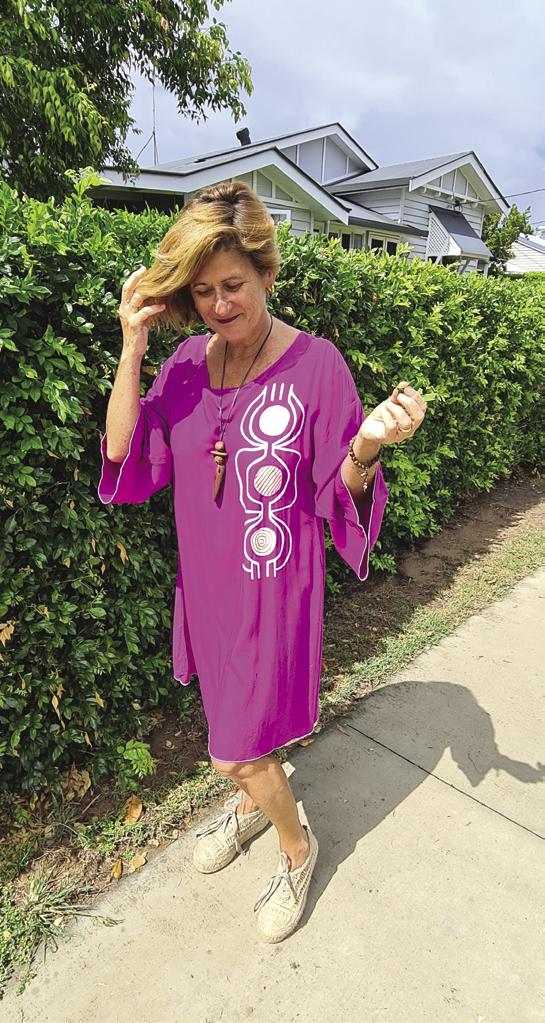
Alexis Todorovski
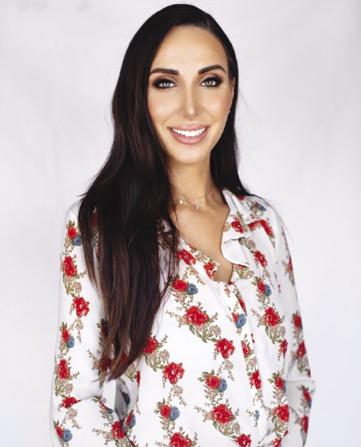
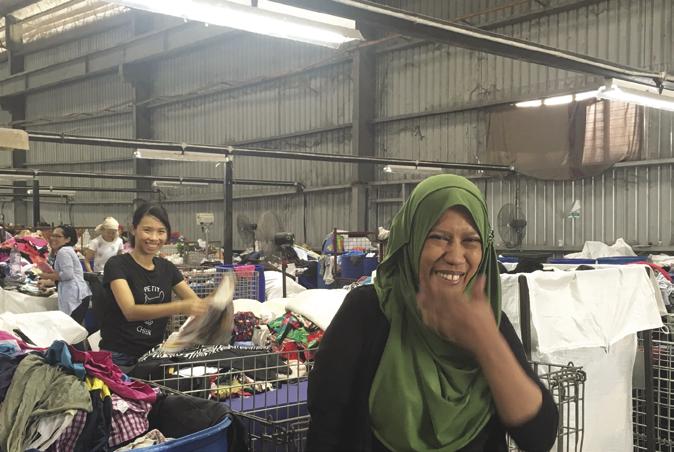
1. What’s the key? Where should we be focusing in order to successfully balance the health of the Earth, with the needs of the fashion industry?
Let’s be honest, we will always need fashion and it plays a very important role in many cultures and professions. There is plenty of advice that informs consumers to ‘consume less’ or ‘buy quality items’ that will last a longer time than garments from fast fashion chains. However, the reality is that we need to be offering sustainable fashion at every price point, so we don’t cancel out demographics that don’t have the disposable income to spend more on better made pieces. The key is to challenge manufacturers and retailers to be more accountable for what they are putting in our stores. Fashion should be ethical and sustainable from the point of creation so by the time it gets to its end of life, there are reuse and recycling avenues it can go through that will support a circular economy and avoid landfill.
2. Why do we not think of the Fashion Industry as the major environmental hazard that it is?
Because there’s simply not enough education or awareness around it, especially in Australia. Our textile recycling rate is a mere 12%, meaning a majority of the clothes we buy end up directly in landfill. How many readers know this statistic? SCRgroup has built Australia’s first school fundraising and education program that educates our future generations about the impacts of fast fashion and the importance of clothing reuse and recycling. We believe by influencing every school aged student with sustainable decision-making tools and creating awareness at this level, we have the power to turn this around. We are also creating other innovative programs designed to boost awareness and motivate people to think twice about what they do with their fashion pieces after they’ve finished wearing (and re-wearing!) them.
3. Is sustainability in fashion just lip service currently?
There are some retailers playing an active role in ensuring their brands are more sustainable from start to finish, such as Adidas and HnM. More and more retailers and shopping centres are working with us to customise solutions designed to reduce their textile waste and keep materials moving in a post consumer global circular economy. However, there are so many more brands and shopping centres that need to jump on the sustainability band wagon to make an even bigger impact at an even faster rate. With the help of Local, State and Federal Government, all of with whom we are working closely to build policies and legislative reform, our aim is to increase Australia’s textile recycle rate to 85% by the year 2030.
Cee VanderAa
1. Why would you like to see people embrace ‘Slow
Fashion’ ?

Embracing slow fashion vs fast fashion is a crucial environmental decision we all should consider as we move towards sustainable living. As consumers we can make a difference through the choices we make when it comes to buying clothes. When we look at our weakness of over consumption we can turn this into a strength with the decisions we make. Creating a culture and movement through understanding our influence as a consumer. By choosing conscious ethical slow fashion options we can create a positive impact on our planet. Up cycled textiles or re designing second hand clothing - ‘slow fashion’ is a lot of fun
2. What do you get out of creating ‘Slow Fashion’ ?
Creating slow fashion gets me excited!. I love wearing linen, it breathes easy and is a great textile for warmer weather. I live on the Sunshine Coast of Australia therefore my go to pieces when designing my slow fashion collections are op shop embroidered vintage linen tablecloths. Hunting for the right pieces is fun and a real challenge! Design is more than a conscious decision, it is the feeling it creates inside when a piece comes together. As a creator, a woman, a mother, a wife, from nothing, something always comes as I breathe life back into pre-loved fabrics. Design with intention can have a powerful impact.
Image: Levi VanderAa
3. Can ‘Slow fashion’ be a viable business model for yourself and other designers ?
Yes of course slow fashion can be a viable business model. Slow fashion is a selling advantage with more and more consumers supporting ethical brands. Keep it slow, keep it local, stay authentic and build awareness through transparent ethical policies. Story telling is a great way to connect your slow fashion products to the consumer when the business model and intentions of your brand have a greater purpose.
About the Writer
Nikki Hind, WB40’s Fashion Editor is the founder of fashion label Blind Grit, and is an Inclusion and Diversity Media Adviser, with a passion for inclusion in fashion. Nikki is Australia’s first blind fashion designer, and has a background in PR, communications and event management. www.blindgrit.com





